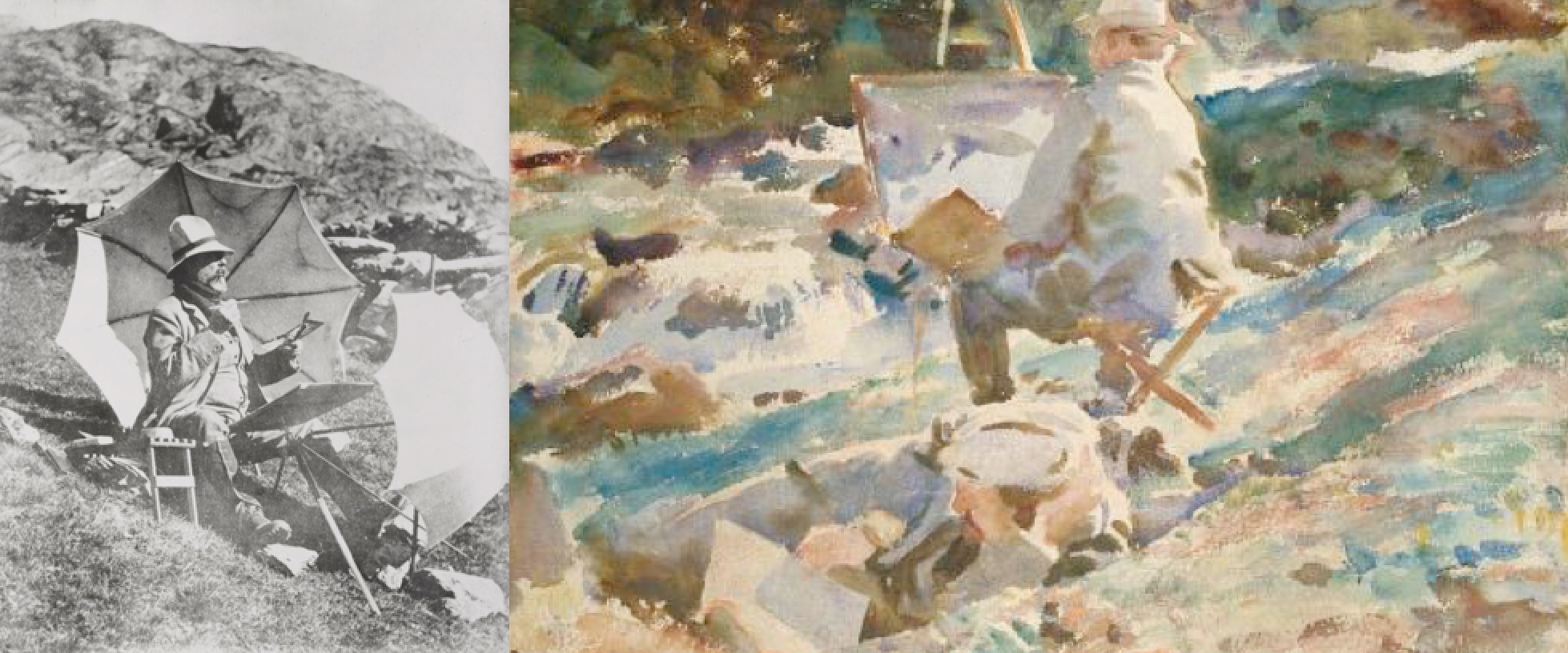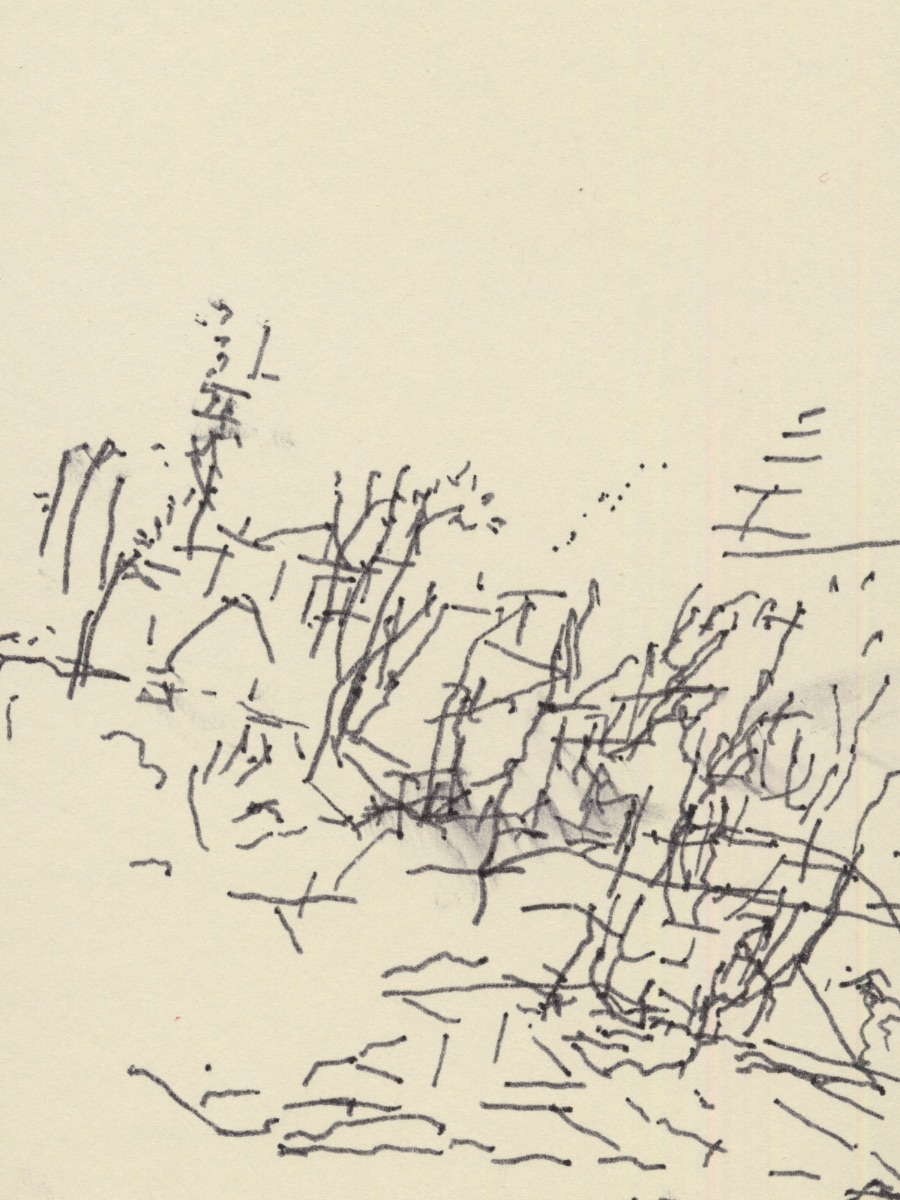
John Singer Sargent, plein air, and the result. [o]
1 Look out
Take a seat. Position your pencil to the page. Gaze outward. Widen your eyes and take in what you see.
Without peeking at your sheet, make marks — any marks — to signify observable relationships. Scribble clouds dancing in puddles. Trace the roadside ditch holding tracks. Pen ticks and triangles for the telephone poles framing shacks.
Can you do this for one minute? For two?
Do you notice anew?

2 Go with the flow
Wherever you are, find something in motion.
Forget what you know about this something and begin to draw it. Swiftly.
Without thinking, attempt to capture shifts, flicks, and flutters. Scratch spirals and squares to show sun licking skyline. Scrawl w’s and m’s to render a raven in the wind. Doodle dash upon dash to depict a peopled running track.
Animate the fleeting. Be quick!

3 See the big picture
Observe and draw any vegetation within your immediate surroundings — an old pine, some dandelions, a mysterious grass.
Consider what supports the vegetation, like soil and microbes. Then consider what influences the support system, like climate and hydrology. And then consider what influences that which influences the support system, like traditions and policies.
Now, try using simple symbols like arrows, circles, or grids to portray the plants enveloped within a system of systems.

4 Get lost
Lose yourself at your location. Squint to fuzzy familiar fields.
Spin yourself to swirl the same-old-same-old streets and storefronts. Turn upside down.
Once you are sufficiently dizzied or disoriented, combine points and lines to express surprising connections. Dots and squiggles can signify courtyard and neighbors, skyscraper and strangers.
Getting lost allows you to concoct fresh compositions on your canvas and, maybe, discover ways to welcome the unexpected.

5 Seek the common ground
Locate a landscape feature that is down low and easily overlooked. Magnify this feature with a sketch.
Fill the page with a supersize storm drain, a mega maple seedling, a titanic sidewalk crack. Let your paper elevate the seemingly ordinary.
When you spot, say, the diamond dew on a fallen leaf or the ruffled duff beneath a cedar, make bold strokes with your pen.
Celebrate the emergent around you. ō


JOLIE KAYTES is an associate professor of landscape architecture at Washington State University. Her teaching, writing, and images integrate disciplinary perspectives and focus on recognizing the complexity of landscapes. Jolie’s work has appeared in The Fourth River, Terrain.org, Camas and elsewhere. In 2017, she was a resident at the H.J. Andrews Experimental Forest and PLAYA .
Drawings by the author.

Comments
Very interesting; as a
Very interesting. As a teacher of middle school, so long ago, I have used the 'Drawing on the Right Side of the Brain techniques by Betty Edwards. I am still amazed at the images produced in using her techniques. Not that I'm an artist or draw often, but I like it very much. Students, youngers and adults alike were also astonished by what they could do using different techniques or prompts. Maybe I'll try this technique!
Hi Janet. I too have loved
Hi, Janet. I too have loved Drawing on the Right Side of the Brain. Your comment, not that I'm an artist, is something Betty Edwards takes up in her follow up book Drawing on the Artist Within. I'm reading it right now and loving it. You might too. And yes ,this wild technique is amazing. I'm definitely going to have a go.
Great piece. The instructions
Great piece. The instructions won't make me an artist, but they are encouraging me to sketch.
Add new comment